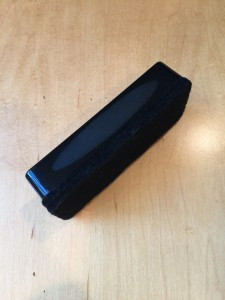The “Eraser Dance” is an interactive and engaging music game perfect for getting children actively involved in learning songs. This simple yet effective activity uses word association and a bit of friendly competition to help kids focus on lyrics, understand word meanings, and improve their song memorization in a fun and dynamic way. Let’s explore how to bring the Eraser Dance to your music sessions.
What is the Eraser Dance?
Imagine a classroom setting where children are not just passively listening to music, but actively participating with erasers in hand. The Eraser Dance transforms song learning into a physical and mental challenge. The core concept is straightforward: while the teacher sings a song, children identify and erase words from a pre-written list on the board that are not part of the song. This activity encourages focused listening, quick thinking, and teamwork, all while immersing them in the melody and rhythm of the music. All you need is an eraser, a whiteboard or chalkboard, and a list of carefully chosen words.
How to Play the Eraser Dance: Step-by-Step Guide
Setting up and playing the Eraser Dance is easy and requires minimal preparation. Here’s a step-by-step guide to get you started:
Setting Up the Game: Preparing the Word List
The magic of the Eraser Dance lies in the word list. To create an effective and educational game, follow these steps when selecting your words:
-
Choose Core Song Words: Select approximately 12 keywords directly from the song you plan to teach. These words should represent key phrases or concepts within the lyrics, and ideally be words that might be new or slightly challenging for the children to understand.
-
Create Word Groups: For each of the chosen song words, add two “companion” words. These companion words are crucial for the learning aspect of the game. Select words that are either synonyms or antonyms of the song word. This subtle inclusion of related vocabulary helps children to unknowingly grasp a deeper understanding of the song word’s meaning through comparison and contrast. A thesaurus or dictionary can be a valuable tool in this step.
-
Organize the Word List: Write out the sets of three words on the board. Arrange these sets in the order that the song words appear in the song. However, within each set of three, vary the position of the actual song word – sometimes place it first, sometimes second, or third. This prevents children from simply memorizing the word order on the board and forces them to actively listen to the song to identify the correct words to leave unerased.
For example, if you’re using the song “I Wonder When He Comes Again,” your word list might look something like this on the board:
- Distant, Wonder, Question
- Again, Comes, Arrives
- Bright, Light, Shine
This setup ensures that children are not just passively erasing words, but are actively engaging with the vocabulary and meaning of the song.
Playing the Game: Engaging Children in Musical Fun
Now that your word list is ready, it’s time to get the Eraser Dance started!
-
Explain the Rules Clearly: Before you begin, gather the children and clearly explain the simple rules of the Eraser Dance:
- “Eraser one word that is NOT in the song.” (Emphasize this point.)
- “Give the eraser to someone who has NOT had the eraser before.” (Promote turn-taking and inclusion.)
- “No talking.” (Encourage focus and non-verbal communication.)
-
Start the Music and the Eraser Pass: Hand the eraser to a child to begin the game. As you start singing the chosen song, the child with the eraser needs to identify a word on the board that is not in the song, erase it, and then pass the eraser to another child who hasn’t had a turn yet.
-
Teacher’s Role: Singing and Encouraging: Your role is to keep singing the song throughout the activity. Maintain an encouraging and positive atmosphere. If a child mistakenly erases a word that is in the song, don’t make a big deal out of it. Casually rewrite the word back on the board as you continue singing, without interrupting the flow or singling out the child.
-
Maintain Engagement and Fun: It’s natural for children to want to talk and help each other, even when the rule is “no talking!” You might hear whispers like “Not that one!” or excited shouts of “One down!”. Acknowledge this enthusiasm with a smile, gently remind them to be quiet with a finger to your lips, but let your eyes twinkle to show you understand the fun and excitement of the game. Walk amongst the children, offering smiles and encouragement, keeping the energy positive and focused on the music.
 Children engaged in the Eraser Pass game, focusing on the whiteboard with word lists.
Children engaged in the Eraser Pass game, focusing on the whiteboard with word lists.
- Repeat and Increase the Challenge: Sing the song multiple times (at least three times is recommended). After the first playthrough, you can announce how many incorrect words are left, adding a bit of suspense and encouraging them to focus even more. The repetition of the song, combined with the active engagement of the game, helps the song lyrics and melody to sink in almost effortlessly.
 A closer view of children participating in the Eraser Pass game, with erasers and word lists visible on the board.
A closer view of children participating in the Eraser Pass game, with erasers and word lists visible on the board.
Benefits of the Eraser Dance for Music Education
The Eraser Dance is more than just a fun game; it’s a valuable tool for music education, offering several key benefits:
Enhances Word Recognition and Song Familiarity
The game compels children to listen attentively to the song lyrics to differentiate between the words on the board and the words being sung. This focused listening significantly improves word recognition and helps them become more familiar with the song’s structure and narrative. By actively searching for words that don’t belong, they are subconsciously reinforcing the words that do belong to the song in their minds.
Develops Cognitive Skills
Eraser Dance fosters important cognitive skills in children. They are actively comparing and contrasting words, making decisions under a time constraint (before the song ends), and problem-solving to identify the incorrect words. The inclusion of synonyms and antonyms in the word lists adds another layer of cognitive engagement, subtly enhancing their vocabulary and understanding of word relationships.
Promotes Active Learning and Engagement
In contrast to passive listening, the Eraser Dance transforms music learning into an active and participatory experience. The physical act of erasing, combined with the game-like format, keeps children highly engaged and motivated. It caters to different learning styles, incorporating auditory, visual, and kinesthetic elements, making learning more accessible and enjoyable for all children.
Extending the Eraser Dance Activity
To further enhance the learning experience and add another layer of fun, try this extension activity after the initial Eraser Dance:
Sing Only the Song Words: Once all the incorrect words have been erased, challenge the children to sing the song, but this time, only sing the words that are still left on the board (the words that are actually in the song). This is often the first time you will explicitly ask them to sing, as their focus has been on the erasing task up to this point. However, due to their active engagement with the song during the game, the words and melody will have already started to become ingrained.
Sing Only the Erased Words: For an even greater challenge and a fun “mind puzzle,” switch it up and ask them to sing only the words that were erased from the board. This playful manipulation of the song and word lists reinforces their understanding in a creative and memorable way.
The Eraser Dance is a dynamic and enjoyable way to teach music to children. Its simple setup, engaging gameplay, and educational benefits make it a valuable addition to any music lesson plan. So grab an eraser, prepare your word list, and get ready to dance your way into learning!

